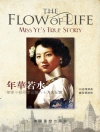Arthur Thomas Malkin’s monumental work, ‘The Gallery of Portraits’ (Volumes 1-7), stands as a testament to the biographical tradition of 19th-century literature, meticulously chronicling the lives and contributions of significant historical and contemporary figures. With an engaging prose style that combines vivid imagery and comprehensive detail, Malkin invites readers into the intimate landscapes of his subjects’ lives, discussing their influence on society, culture, and the arts. The structure of the work, comprising multiple volumes, allows for a nuanced exploration of personal anecdotes and historical contexts, highlighting the interconnectedness of individual lives and global events during a period of profound change in England and beyond. Malkin, an accomplished scholar and a keen observer of human character, draws upon his extensive education and intellectual curiosity to breathe life into the narratives of his portraits. His background in the arts and history likely informed his approach, as he sought to illuminate the complexities and subtleties of notable figures, from politicians to artists. Malkin’s ability to weave intricate details into broader societal frameworks reflects his commitment to both the individual and the collective story of humanity. For those who appreciate well-researched biographies enriched with eloquent prose, ‘The Gallery of Portraits’ offers a captivating journey through time, elevating the study of biography to an art form. This work is highly recommended for historians, literary enthusiasts, and anyone intrigued by the tapestry of human experience.
Over de auteur
Arthur Thomas Malkin, an English biographer and literate of the 19th century, is most notably recognized for his work on ‘The Gallery of Portraits (Vol. 1-7)’. Although not as household a name as his contemporaries, Malkin’s contribution to English literature is commendable. His multi-volume series stands as a testament to his dedication to documenting and sharing the visages and lives of prominent figures that molded the cultural and political landscape of his time. With meticulous attention to detail, Malkin curated each volume with biographical sketches that were not only informative but elegantly composed, reflecting his scholarly background and his literary panache. This compendium remains a valuable resource for historians and enthusiasts of biographical literature. Malkin’s prose is indicative of the era’s penchant for detailed narrative and provides modern readers with a window into the norms of 19th-century biographical writing. While perhaps eclipsed by the brilliance of more famous authors of his time, Malkin’s work continues to be a subject of interest for those studying the period’s literary output and provides enduring insights into the figures who graced the pages of his portraits gallery.












